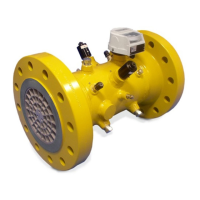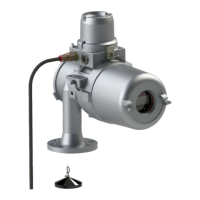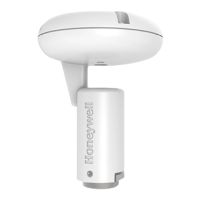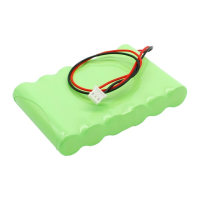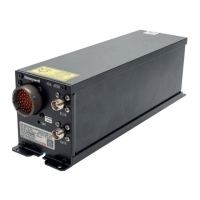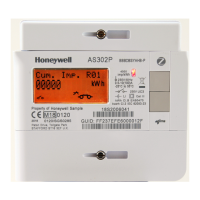60 Honeywell Sensing and Control
Signal Conditioning, Self Calibrating Digital Indicators
Rev. G, 008-0608-00
It is important to know your application in order to select the
appropriate calibration type. When the best possible accuracy
is required, Known-Load Calibration is recommended. However,
if known-loads are not available, Shunt Calibration may be used
instead.
The choices for this menu item are:
• “TYPE= SHUNT CAL” means Shunt Calibration. First, you are
prompted to apply the load entered in the “ZERO SCALE
VALUE” register. Next, the instrument interconnects the Shunt
Cal 1 and Shunt Cal 2 pins. This activates the transducer’s
or in-line amplifier’s shunt calibration circuit which causes
a predictable apparent signal. The instrument then takes a
reading and adjusts itself using the “SHUNT CAL VALUE” regis-
ter.
• “TYPE= 2 POINT CAL” means 2-Point Known Load Calibra-
tion. You are prompted to apply the loads to the transducer
that were entered in the “KNOWN POINT 1/2” and “KNOWN POINT
2/2” registers. This technique assumes that the transducer is
linear, so the usual loads used are zero scale and full scale.
• “TYPE= 3 POINT CAL” means 3-Point Known Load Calibration.
You are prompted to apply the loads to the transducer that
were entered in the “KNOWN POINT 1/3” and “KNOWN POINT 2/3”
and “KNOWN POINT 3/3” registers. This technique can be used
to compensate for the non-linearity in the transducer. The
usual loads used are zero scale, half scale and full scale, but
you are not restricted to these loads.
• “TYPE= 5 POINT CAL” means 5-Point Known Load Calibration.
You are prompted to apply the loads to the transducer that
were entered in the “KNOWN POINT 1/5”, “KNOWN POINT 2/5”,
“KNOWN POINT 3/5”, “KNOWN POINT 4/5” and “KNOWN POINT
5/5” registers. This technique can be used to compensate
for the non-linearity in the transducer. The usual loads used
are zero scale, one-quarter scale, half scale, three-quarters
scale and full scale, but you are not restricted to these loads.
The selection of the calibration type affects what menu items ap-
pear in the CALIBRATION DATA sub-menu.
12.6.5 CALIBRATION DATA Sub-Menu
This enters the values that will be used by the instrument when
it calibrates itself to the transducer. The menu items that are
displayed will change according to what the CALIBRATION TYPE is
set for.
FULL SCALE VOLT or FULL SCALE CURR Menu Item
The nominal transducer/amplifier output when its full-scale load is
applied to it, in volts or milliamps. This menu item is used by the
instrument to set gain of its amplifier circuit. This value is normally
found on the transducer’s Certificate of Calibration or amplifier’s
Application Note.
FULL SCALE VALUE Menu Item
The transducer’s full-scale output in engineering units. It is avail-
able only with the Shunt Calibration type.
ZERO SCALE VALUE Menu Item
The transducer’s zero-scale output in engineering units, which is
usually zero. It is available only with the Shunt Calibration type.
SHUNT CAL VALUE Menu Item
The shunt calibration value must be calculated by using informa-
tion found on the transducer’s Certificate of Calibration and the
following formula:
SHUNT CAL VALUE =
Shunt-calibration output
Full-scale output
x Full-scale capacity
The terms have the following meanings:
• Shunt-CalibrationOutput:Thetransducer’soutputwhenits
shunt calibration function is activated in Volts or milliamps.
Sometimes called “Shunt Cal. Factor”.
• Full-ScaleOutput:Thetransducer’sfull-scaleoutputinVolts
or milliamps. Sometimes called “Calibration Factor”.
• Full-ScaleCapacity:Thetransducer’sdesiredfull-scaleread-
ing in engineering units (PSI, lbs, Kg, etc.). You may wish
to convert the engineering units of this value. For example,
if the transducer full scale is 3000 PSIG and you wish the
channel to read in bar, you must convert 3000 PSIG into
206.84 bar.
This menu item is only available with the Shunt Calibration type.
To verify proper transducer/amplifier operation, you can activate
the transducer’s/amplifier’s shunt calibration function while the
instrument is in the RUN mode. Press and hold the [ENTER] but-
ton for three seconds; this will activate the transducer’s/amplifier’s
shunt calibration function and display the reading.
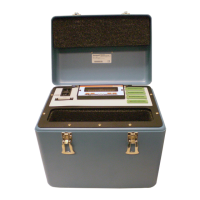
